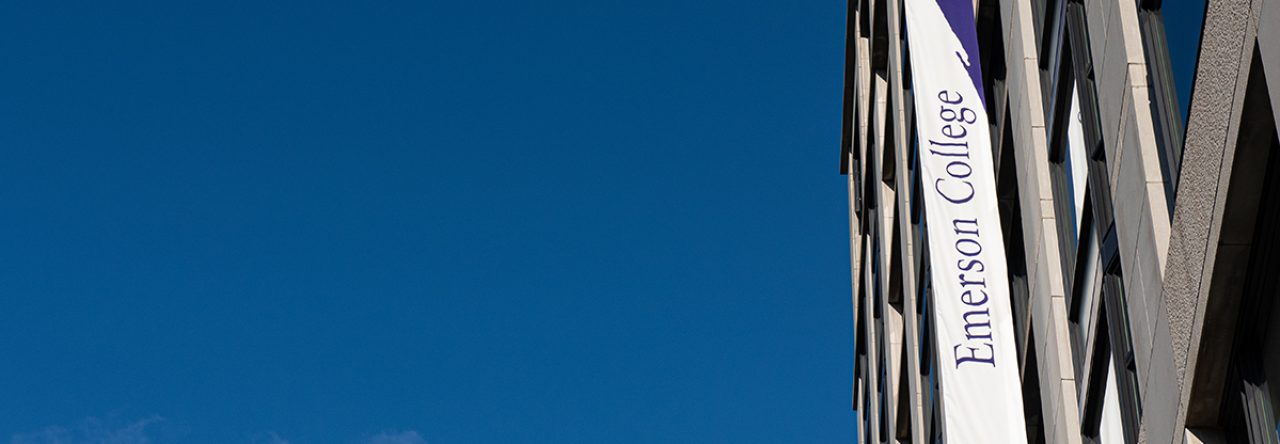New Facilities and Administrative (F&A) Costs Rates for Grants Effective July 1, 2023
Dear Emerson community members:
Every few years, Emerson College is required to negotiate the Facilities and Administrative (F&A) rates it uses in grants and contracts with the Federal Government. This month, Emerson received our new Rate Agreement from the Department of Health and Human Services for the period of July 1, 2023 through June 30, 2027, or until amended.
Effective immediately, the revised rates must be used for all federal sponsored project proposals with anticipated start dates of July 1, 2023 or later.
The new rates are as follows:
Indirect Costs/Overhead
| From | To | Rate | Location | Applicable To |
| 07/01/2023 | 06/30/2027 | 56% | On campus | All programs |
| 07/01/2023 | 06/30/2027 | 26% | Off campus | All programs |
| 07/01/2027 | Until amended | 56% | On campus | All programs |
| 07/01/2027 | Until amended | 26% | Off campus | All programs |
Fringe Benefit Rates
| From | To | Rate | Applicable To |
| 07/01/2023 | 06/30/2027 | 32% | Full-time employees |
| 07/01/2023 | 06/30/2027 | 7.65% | Part-time employees |
| 07/01/2027 | Until amended | 32% | Full-time employees |
| 07/01/2027 | Until amended | 7.65% | Part-time employees |
These rates will apply to all new or new-continuing contracts and grants awarded for funding on or after July 1, 2023. Existing contracts/grants may still use the old rates as originally awarded.
As a reminder, it is the policy of Emerson College to request indirect costs on proposals to non-federal sponsors, when permitted. Many foundations specify their own indirect cost rates, and it is the policy of the College to utilize these rates in its proposal budgets. When a non-federal sponsor is silent on F&A, a de minimis rate of 10% should be applied.
To learn more about F&A costs and how they are budgeted and recovered, please review the answers to Frequently Asked Questions (FAQs) below.
FAQs
What are Facilities and Administrative Costs?
Also referred to as indirect costs, F&A costs are expenses incurred by an organization that cannot be identified readily and specifically with a particular sponsored project but contribute to the ability of the College to conduct sponsored projects. Expenses of maintaining and operating the College’s sponsored project infrastructure include costs related to buildings (labs, offices, training facilities, etc.), utilities (water, electricity, heating, air conditioning, etc.), maintenance (custodial and facilities services, etc.), equipment, libraries, general administration (purchasing, accounting, payroll, human resources, legal services, etc.), departmental administration (deans offices, academic departments, etc.), and sponsored project administration. These costs are considered F&A costs, and sponsoring agencies reimburse organizations for these expenses through an F&A rate.
To what budget items does the F&A rate apply?
All rates are applied to a Modified Total Direct Costs (MTDC) base. The MTDC base includes all direct costs, excluding capital expenditures, equipment with a per-unit cost of $5,000 or more, charges for tuition remission, rental costs of off-campus facilities, scholarships, fellowships, participant support costs, and the portion of each subaward
Why does the College require project directors to budget for F&A costs?
F&A costs are actual costs that are incurred by the College in administering a sponsored award. Because it is not practical for a project budget to allocate funding for all such costs, the Federal government utilizes a rate model to account for these expenses and to provide a fair and consistent method through which reimbursement can be made. The College requires that sponsored project budgets include F&A costs because facilities and administrative expenses are incurred for each sponsored project, and without funds to cover these costs, the College would not have an infrastructure that could support sponsored projects. It would be unfair to require students to cover these costs through tuition revenue, especially for projects that are not for their direct benefit.
How are the rates determined?
The Federal government outlines specific procedures to be used in determining the rates and requires institutions to provide a proposal and financial data in accordance with these procedures. The government then uses a detailed review process to arrive at approved rates for each organization. The rates are not set by the College and cannot be amended without a new Federal rate agreement.
What does the College do with funds recovered through the F&A rate?
Recovered F&A funds are used to help offset the College’s facilities and administrative expenses.
What if I want to apply to a funding program that limits or prohibits F&A costs?
If a sponsoring agency limits or prohibits the recovery of F&A costs, the College currently accepts these restrictions and subsidizes the F&A costs provided that written documentation (i.e., policy statement or application guidelines) from the sponsoring agency is provided when the proposal is submitted for internal review.
What if I have a current sponsored project award that uses a lower rate?
The revised rates apply only to new awards and do not impact existing awards. Effective immediately, project directors are required to use the new rates for all proposals submitted for internal review.
If you have questions about budgeting for F&A costs, please contact the Executive Director for the Office of Research and Creative Scholarship with any questions.
